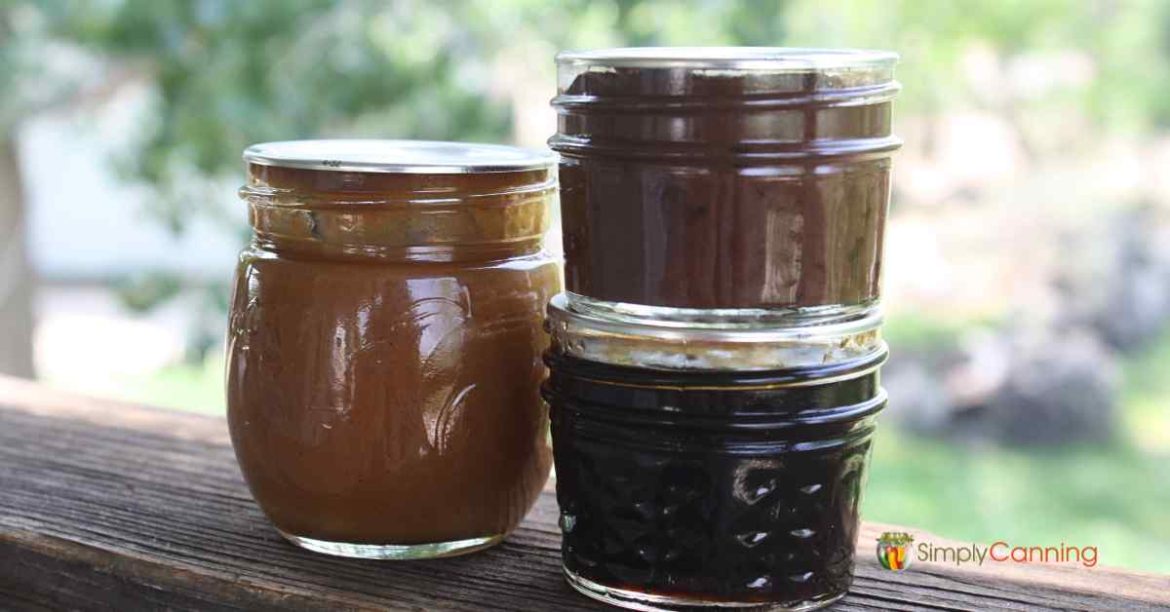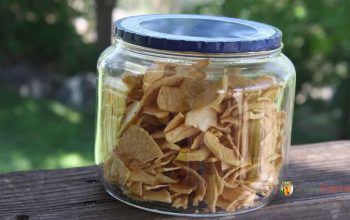Fruit butter is a great way to make a sweet spread that doesn’t have quite as much sugar as jam or jelly. It is basically a cooked down version of sauce. No added pectin is used. For instance, applesauce can become apple butter by cooking it a little longer. I’ve made apple, pear, and peach butters, but other fruit can be used as well. Apricots, plums, grapes, and even crabapples can be used.
In this article, you’ll learn the basic process of cooking down fruit pulp with sugar and optional spices to make fruit butter for canning.
Fruit Butter Directions
Quantity
How much each recipe yields will vary a lot depending on the fruit you’re using, as well as the ripeness and moisture content of the fruit. Different fruit will end up with different quantities. Fruit butter is best preserved in small half-pint or pint jars. (Technically you can process quarts, but I caution about canning fruit butter in quarts here. It might still be what you want. Check out the video for some things to think about.)
Choose Your Canner
If you’re not familiar with using a water bath canner. We’ve got a resource for you called How to Use a Water Bath Canner.
Fruit butter is a perfect project for steam canning as well. If you are not familiar with steam canning check this article for details. The processing time will be the same as a water bath, but the steps to using a steam canner are a bit different.
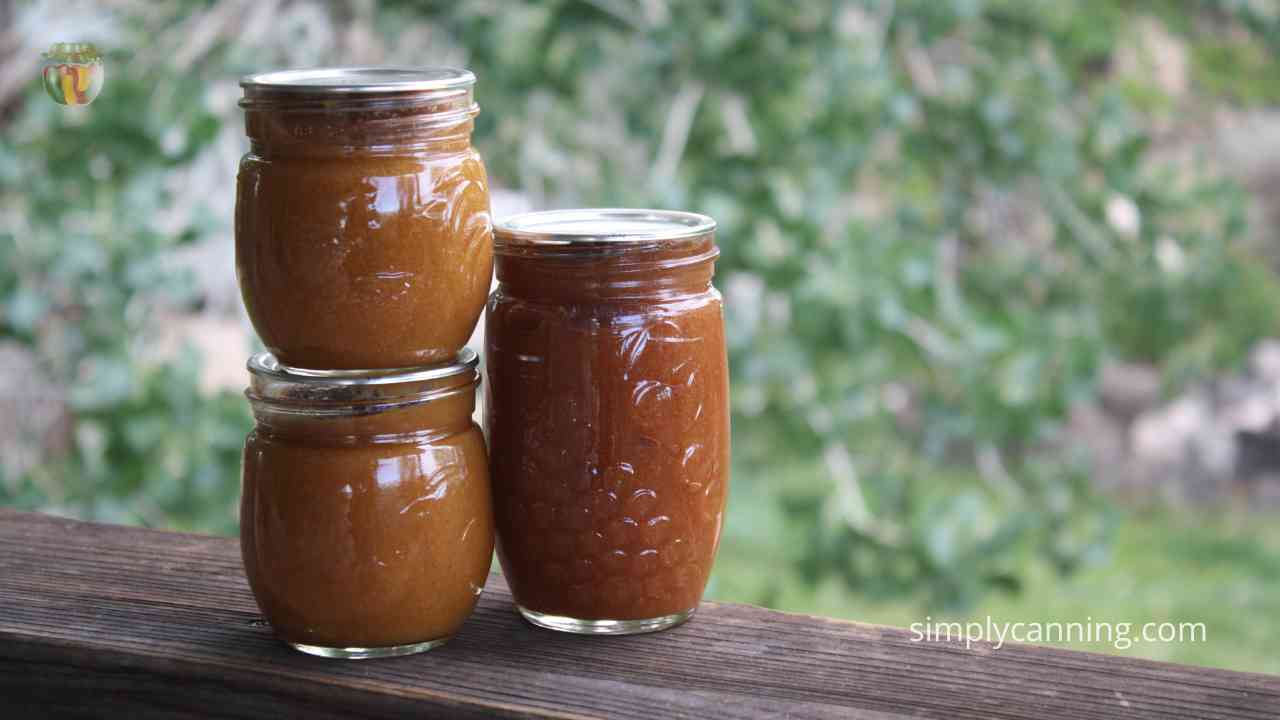
Here is the basic process:
First, you’ll need ripe fruit. Gleaning from orchards after the main season is a great way to get free fruit. (gleaning is self harvesting with permission.) Usually this is after the main harvest and you’ll be getting leftovers. The good deals will often be seconds, but they’re still perfectly useable, especially for something like fruit butter that will be cooked down anyway.
Remember, seconds means it might be a bit over ripe or it may be damaged in some way. But do not use spoiled fruit as an excuse to make fruit butter. If the bruising can’t be cut away, or if there is mold, do not make anything out of it. What goes in your jar is the quality you’ll get out of the jar.
Note – If you glean, be sure and call ahead, and always treat the orchard with respect! That orchard owner is trusting that you won’t allow your children to climb trees, break branches, or be a nuisance. Pick up after yourself. This is their livelihood, so honor the trust they show by allowing you to be there.
Prepare the Fruit
Once you have the fruit, wash, remove any bruises or bad spots, and prepare according to fruit-specific needs. (This will vary somewhat.) The goal is clean, peeled, mashed, fruit pulp or puree. These are basic instructions for more common fruit.
- Apples- Peel, core and slice. Measure and add about half the amount in apple juice or apple cider.
- Apricots– Clean, cut out any damaged portions, and remove the pits. Crush. Measure and add about half the amount in water or juice. (you can remove peels if desired. I prefer to remove them.)
- Crab apples- Clean, quarter and core. Remove stems and blossom ends. Measure and add about half the amount in apple juice, water or apple cider. Crab apples are very tart, I recommend using apple juice to sweeten them up a bit.
- Grapes– Clean, remove stems and seeds if they are not seedless. Crush to start juice flowing. Cook grapes in their own juice.
- Peaches– Peel, remove the pit, and crush. Cook peaches in their own juice.
- Pears- Wash, remove stems and blossom ends. Peel if you like. (I prefer peeled) Crush and cook in their own juice. Add a bit of water or juice if needed to keep the pears moist.
- Plums- Wash, remove the pits, and crush. Cook plums in their own juice.
How to make the puree
You’ll want to simmer your fruit and liquid if used in a pot on the stove top. A gentle low simmer until the fruit softens and mashes. This step is just to create a puree. You’ll thicken it after you add your sweetener and desired spices. (next step)
- A potato masher can help the fruit break down.
- You can use a blender or a food processor to help break down your fruit puree.
- Apples and pears will break down easily with just heat and a whisk.
- Stone fruits like peaches or apricots might like some help with a blender. Just don’t over blend. You want a sauce or puree, not juice.
- Another option is to use a food mill and press soft cooked pulp through the mill. This will mash everything up enough and form a saucy puree. This is actually my favorite option for any fruit with peels. The food mill will remove the peel for you.
After you have your softened puree ready, combine with sugar and desired spices. These spices might include cinnamon, cloves, allspice, and/or nutmeg. Stir well.
I’ve got some specific fruit butter recipes (linked below) which include spice recommendations that I like. I also sometimes add a pinch of salt to enhance the flavor. If you’re using whole instead of ground spices, you can place them in a cheesecloth bag and then remove the bag from the fruit butter before you fill your jars. This will also yield a lighter color of fruit butter in the end.
Thicken your Fruit Puree into a Pulp
Cook down using a slow cooker, stove top, or oven until thick enough to mound it up on a spoon.
There are a couple ways to cook your puree
- My personal preference is an older slow cooker that won’t scorch when left unattended.
- You can also cook ingredients very low on a stove top, stirring often.
- Use a wide glass or stainless steel pan and bake the fruit butter in the oven at 275 degrees F, stirring occasionally until thickened.
- I’ve also seen microwave fruit butter out there, though I’ve never tried that method myself. Simply cook a few minutes at a time. Stirring between each step. Continue until fruit is pureed. (this seems like it would take forever!)
When it’s ready it should be thickened but not ‘pasty’ and have a glossiness or sheen to it. It will round up on a spoon. Use your best judgment here. Part of it is preference as well.
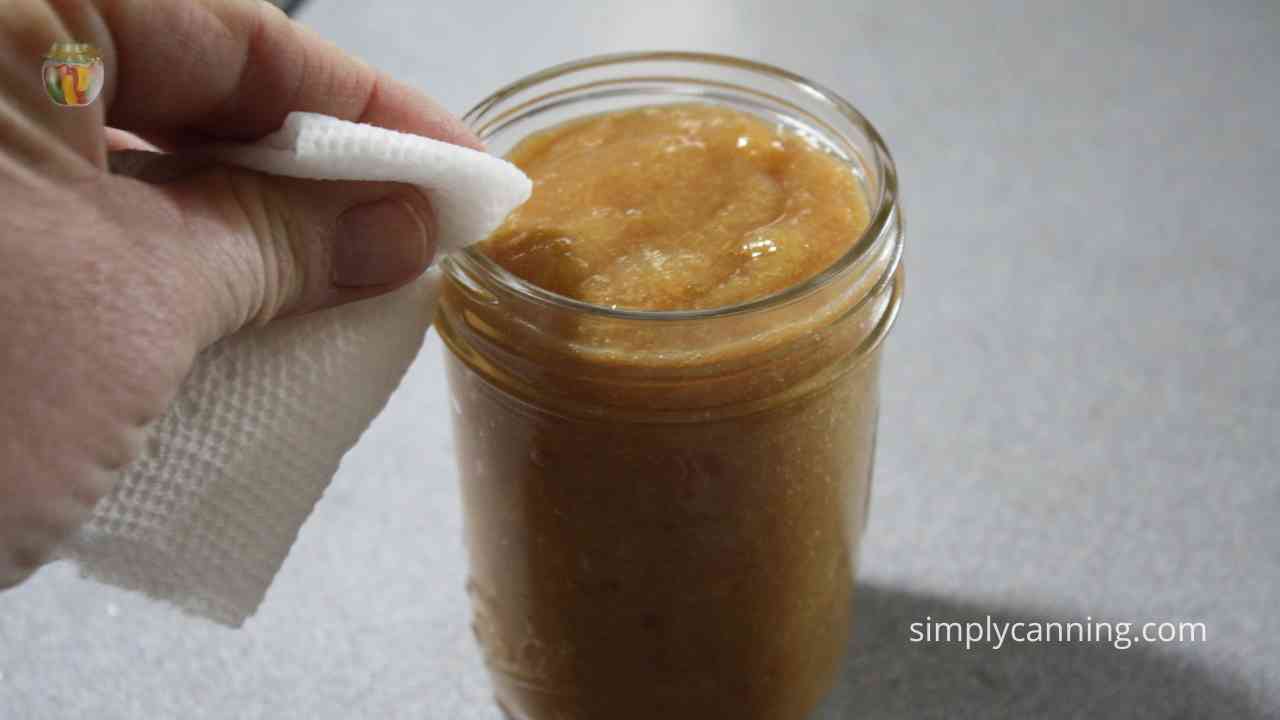
Canning Homemade Fruit Butter
Once finished, fill small canning jars with thickened fruit butter, leaving ¼” headspace. I suggest either half pints or pints at the largest. You can process fruit butter in quarts… but that is a LOT of fruit butter at a time. Check this article for more information on Canning Fruit Butter in Quarts.
Process in your water bath canner according to instructions in the recipe card below. Remember to adjust for altitude as needed. Don’t forget the option to use a steam canner if you like. I recommend steam canning more and more. I prefer it over the water bath. Processing time is the same.
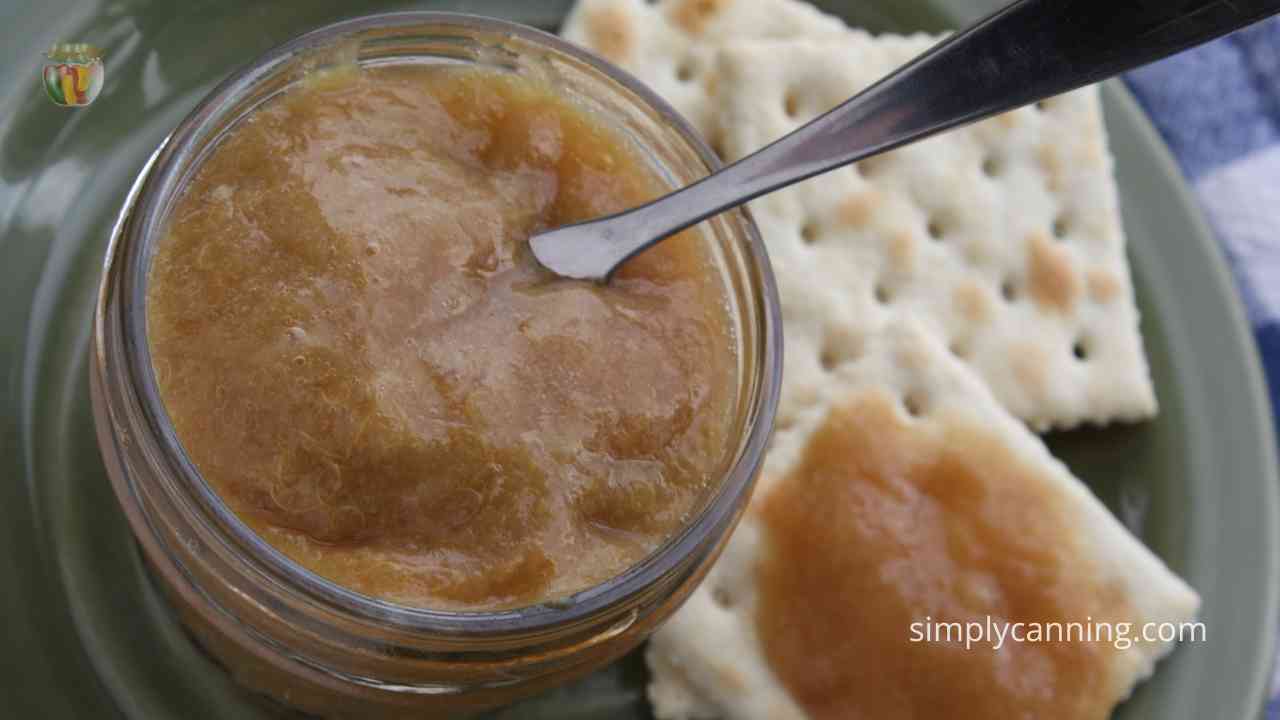
What Type of Fruit Butter Can I Make?
There are lots of different types. I’ve included links here to recipes showing how I make my fruit butter, with various spices and our preferences.
What about Canning Pumpkin Butter?
Pumpkin butter has not been created or tested for home canning. The issue is thickness of the pumpkin puree plus ph levels of pumpkin. Pumpkin is a low acid food and is processed using a pressure canner. You’ve got two options. Make your pumpkin butter and freeze it. Or can pumpkin in cubes and mash it later. Then add sweetener and spices to make your butter for use right away.
Refrigerator or Freezer
You can make refrigerator or freezer fruit butters from other fruits and berries like blueberries or blackberries. I have not found canning instructions for these but in the fridge you can mix and match as you like. You can also change the type of sweetener to maple syrup, brown sugar or add something like orange juice to add a nice touch.
What About Reducing Sugar?
You could cut down on the amount of sugar used. The mixture may not be quite as sweet or thick, but it will still be yummy. You could substitute honey if you’d like. Be aware that the sugar does help preserve the quality. Without that sugar it will tend to discolor. I encourage using some sugar.
What about Lemon Juice or other Acidity?
Some fruits are acidic enough that acidity is optional, some are not acidic enough to be safe for canning without adding some sort of acid. Following tested instructions will ensure that you get a shelf stable product.
Apples are one fruit that I have seen canned both with and without added acid. The version I have is an older one from Ball that does not have added acid. Newer recipes add both water and lemon Juice. You can see a comparison here from the old Ball recipe to the new.
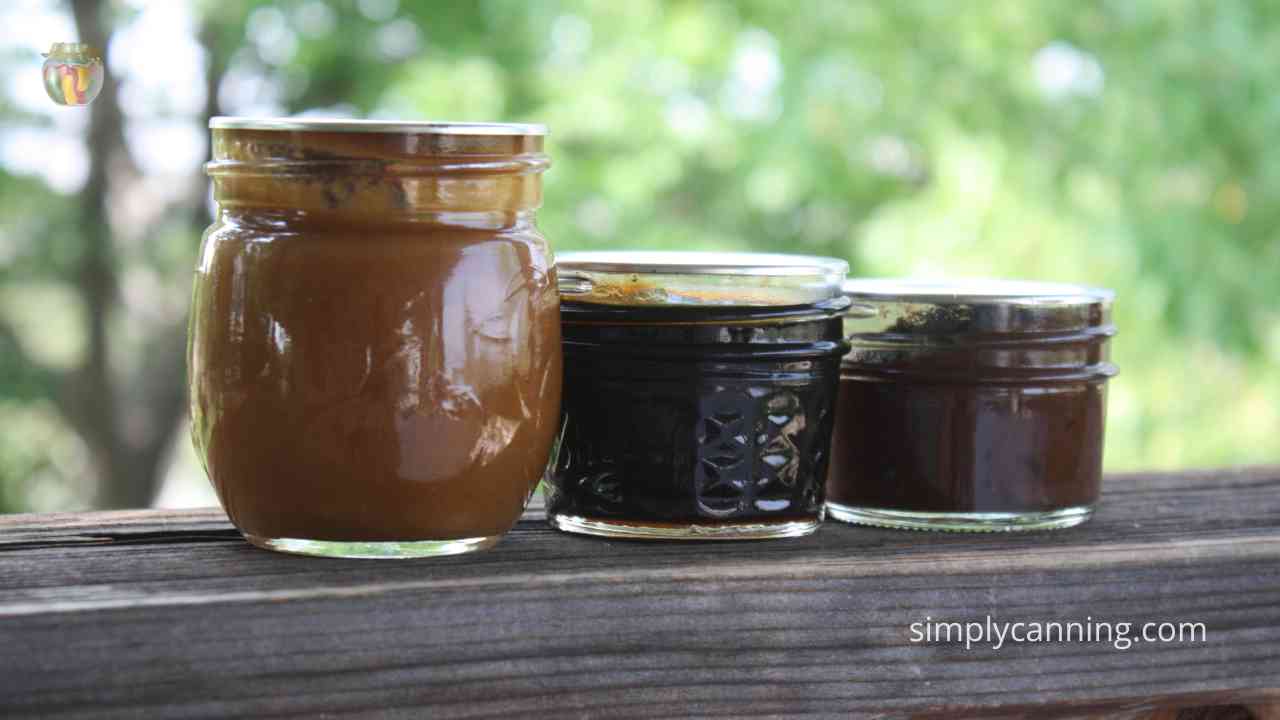
Frequently Asked Questions
It tastes much more richly of the fruit and spices. It’s a rich, sweet mixture.
Jam contains more sugar and usually added pectin, which gels up the mixture. Fruit butter isn’t quite as sweet and thickens up more like a sauce than a gel. Jam is usually quickly cooked, while fruit butter is cooked down over a longer period of time. Fruit butter is also typically flavored with spices.
Yes, it will thicken somewhat as it cools, but it needs to be pretty thick before you can it. Typically, if your fruit butter isn’t thick yet, it just means you haven’t cooked it long enough.
Fruit darkens as is exposed to air and cooks longer. This is normal, especially the longer that it cooks.![Opening jar of homemade apple butter to spread on crackers.]](https://www.simplycanning.com/wp-content/uploads/apple-butter4.jpg)
Fruit butter lasts on the shelf for at least a year, after which its quality just degrades (it doesn’t spoil). Once opened, I typically keep a jar open in the fridge for [INSERT DETAILS].
Fruit butter is great for spreading on toast and crackers, as well as adding to other recipes. One of my favorite ways to use it is [INSERT DETAILS].
Before you go…
Would you rather preserve fruit with less sugar and hassle? Don’t forget that you can can fruit plain too! Sugar is optional for canning fruit. But recommended as it does help with preservation quality.
Sources
- Ball Blue Book
- https://extension.oregonstate.edu/food/preservation/fruit-butters-sp-50-304
- https://nchfp.uga.edu/blog/beware-pumpkin-butter#gsc.tab=0
- https://www.ballmasonjars.com/blog?cid=apple-butter
- Simply Canning Guide
